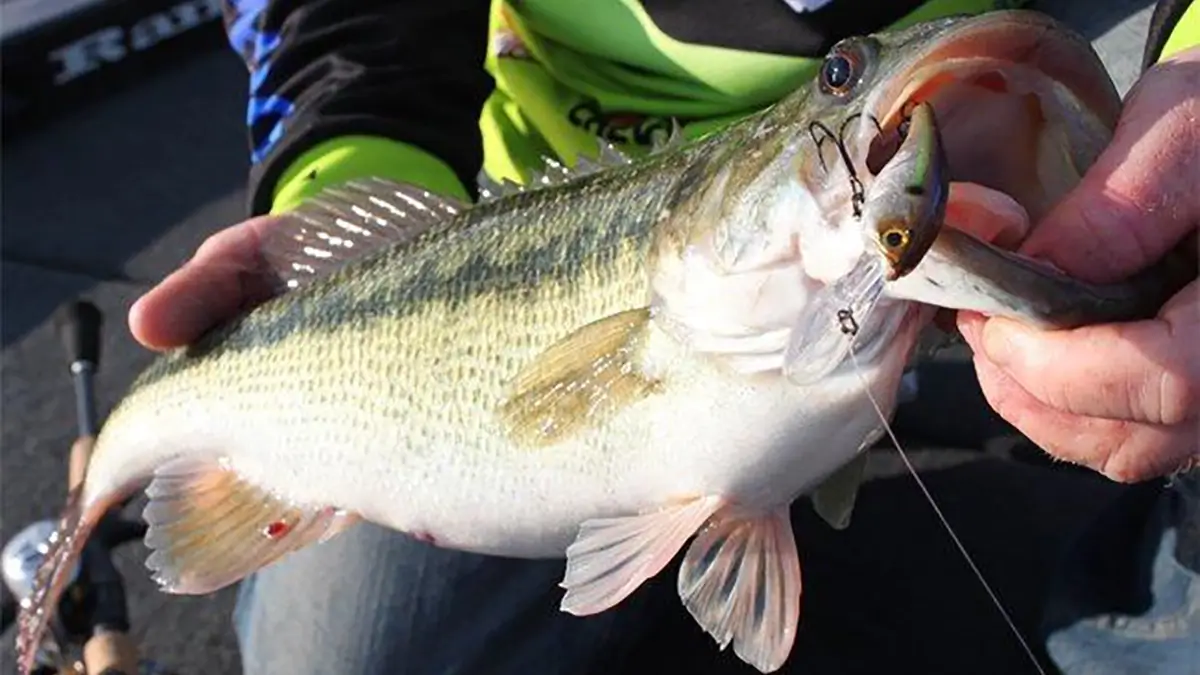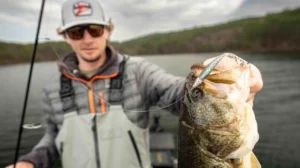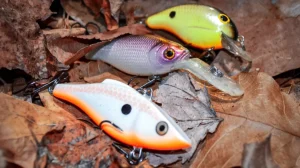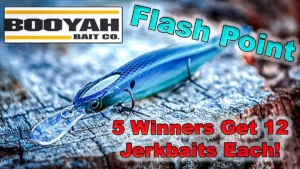January is the coldest month of the year for most of the United States. Water temps have hit rock bottom almost everywhere, and several lakes have frozen over completely. Even here in Alabama where I’m from, we’re in the middle of a two-week stretch of nightly lows forecasted to be at or below freezing and highs barely tickling the 50-degree mark a few times.
Now, I know some of you are rolling your eyes at this forecast as you dust off your auger to go drill another hole through the ice. But this is Alabama, and the last time I went fishing there was a thin layer of ice on the surface of the water til 10 o’clock—any ice on the water south of the Mason-Dixon is an absolute travesty.
Still, rough conditions aside, the fish are biting. And if you are brave enough to go out and face the cold, we have a few tips for you from around the country.
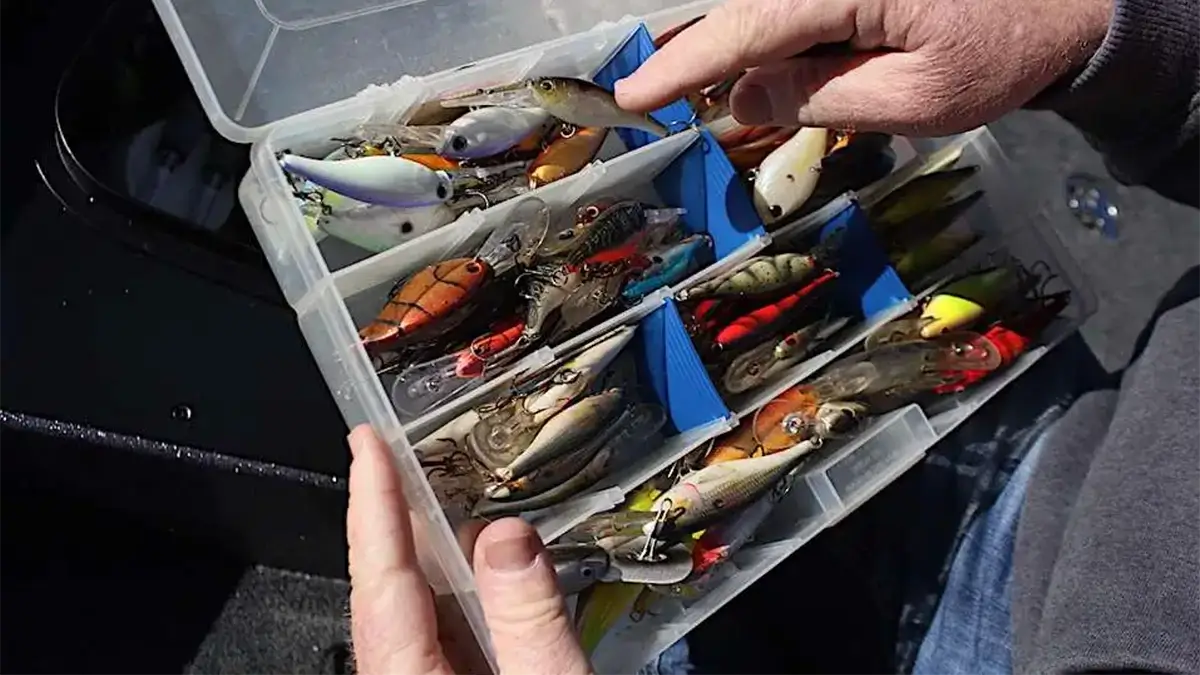
Finesse Cranks Gettin’ It Done
We’ve mentioned crankbaits several times in the past few months as the water temps have gotten colder and colder. And we’ll do so again, but we will really start to hone in now on finesse crankbaits in particular. While bass will still bite squarebills, wide wobbling/round baits, lipless cranks and other baits, a finesse crankbait like a Shad Rap probably shines the brightest of all these.
A finesse crankbait is a blend of a crankbait (obviously) and a jerkbait. The lure is intended to be reeled along like a crankbait, as the bill digs into the water and helps the bait dive. But the elongated body has the look and action of a jerkbait. And a good finesse crankbait has one more thing in common with a lot of jerkbaits—it suspends. Between the tight action of the bait, its ability to pause in the water column and its ability to dive deeper, a finesse crankbait is great for cold water. For more info on this hot cold weather technique, check out our guide to finesse cranking winter bass.
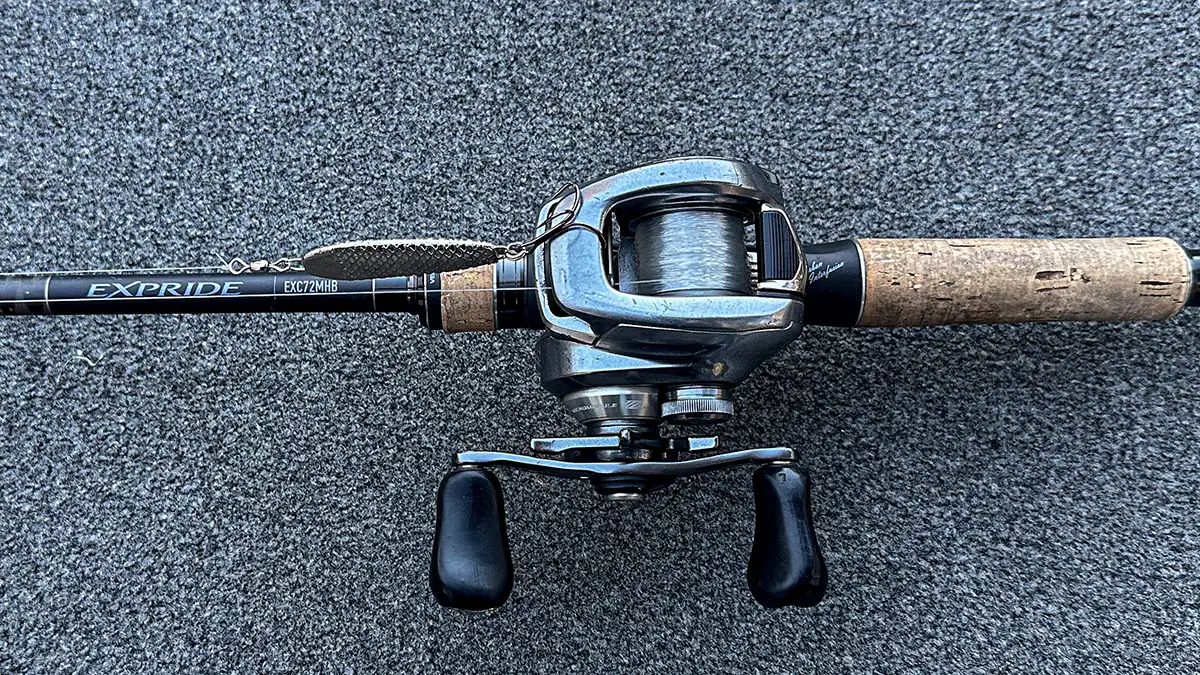
Spoons and Blades
January is a great time of year to target fish in deeper water below the boat. While forward-facing sonar and minnow-style baits get all the attention these days, you can still catch fish with a jigging spoon or blade bait by finding a school of bait or fish out deep and getting directly over top of them.
Once you locate fish below the boat with your 2D sonar, drop your spoon down into the middle of them and pop the bait up and down to trigger a strike. This is again more of an old-school technique, but it has caught countless fish on my home lake of Lake Martin, and I do not doubt it’s a staple on other clear fisheries like Smith, Lanier, Hartwell and the like.
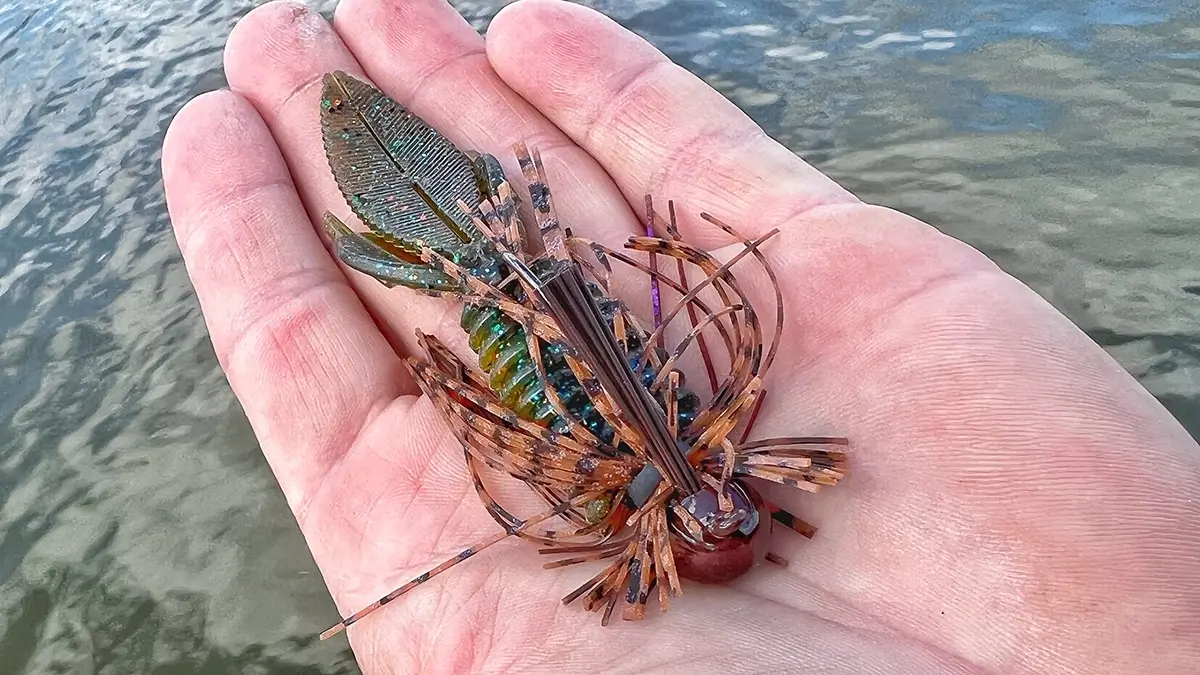
Gettin’ (Finesse) Jiggy With It
A jig is one of the best baits for catching a big bass in the wintertime, and a ball head jig or finesse jig in particular is one of my favorites. I caught my personal best spotted bass on a ball head jig several years ago in a little club tournament on the Coosa River. It weighed 5.42 pounds and I’ll remember that jig bite til the day I die.
I know it’s hard these days to just “go fishing” if you have access to live sonar and a minnow. But I want to encourage you to try a finesse jig this winter. There’s something about a good jig bite that is simply unparalleled. If you want to give it a try, the Jewel Baits Heavy Cover Finesse Football Jig is a great bait. Take this jig and throw it up next to any rock, dock or piece of wood you can find in 8 to 20 feet of water and you’re bound to get bit at some point.
While the above baits are my go-tos this time of year, there are a few Honorable Mentions. These include jerkbaits, underspins, Ned rigs, as well as umbrella rigs.
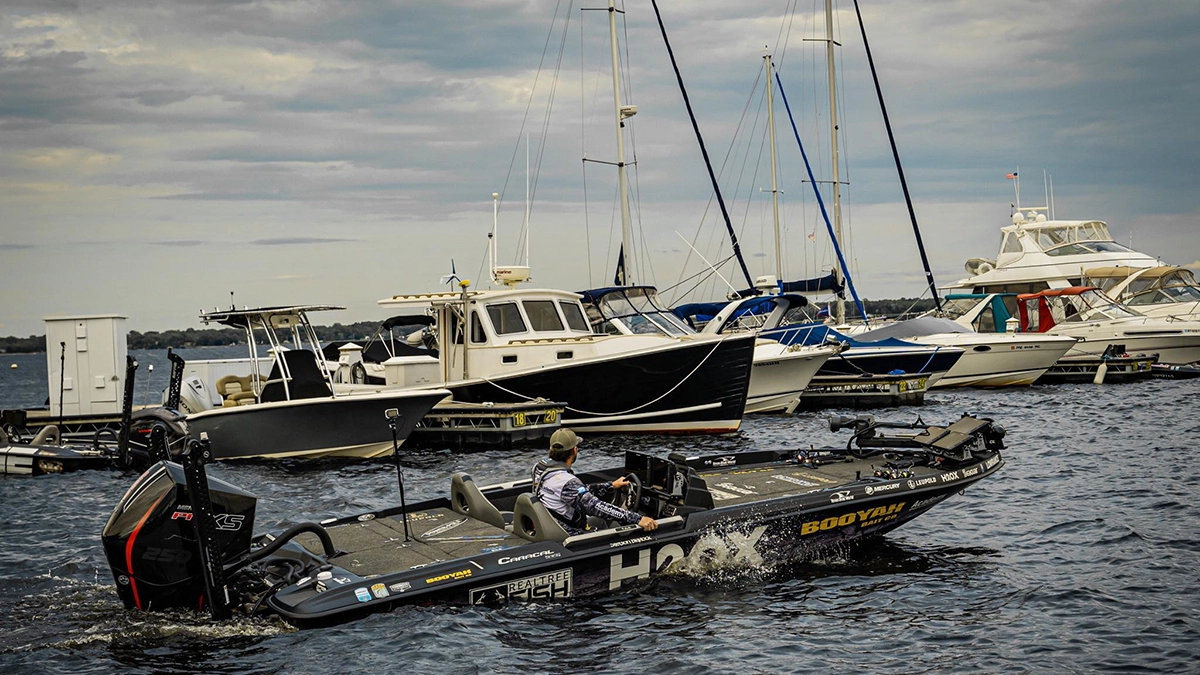
Arkansas: Stetson Blaylock
I think January is the time of year to get some of your biggest jig bites. There are so many types of jigs, you have to figure out what’s going to work best in your area. I’ll have a football jig, a finesse jig and a grass jig, because we have grass in our lakes here. You have to figure out what you’re going to be targeting. If it’s super deep rock and wood structure, you want a football jig. If it’s going to be more like dock poles, shallow rock banks and laydowns, you want a finesse jig. And if you’re going to be fishing grass, you want a heavy flipping jig of some sort.
I think a lot of times, jig selection is based on pressure. If you’ve got a good windy day and less pressure on the lake, the 3/4-ounce War Eagle Football Jig plays a critical role in getting big bites. A lot of times, you can go behind people that are “minnowing,” or forward-facing sonar fishing, and drag a jig in those places and get some of those key bites. Those fish still eat that stuff. It’s just so much more efficient to use your sonar and fish those minnow-style baits.
If I’m utilizing forward-facing sonar, I’m going to fish a minnow: the YUM Forward-Facing Sonar Minnow on a 1/2-ounce head. But we’ve gotten so fixated on throwing it at single fish that people have forgotten that this whole minnow thing started with people targeting fish they couldn’t see on the bottom. That’s my number one thing right now.
I utilize it in those winter fishing locations (points, drains, bluffs) where you would drag a football jig in 20 to 30 to 40 feet of water. It’s just now that the minnow and Active Target 2 combo are so effective, that it’s almost silly to not utilize them in that manner. You try to keep your boat in that depth where you would get most of your bites, but just keep that minnow right up off the bottom.
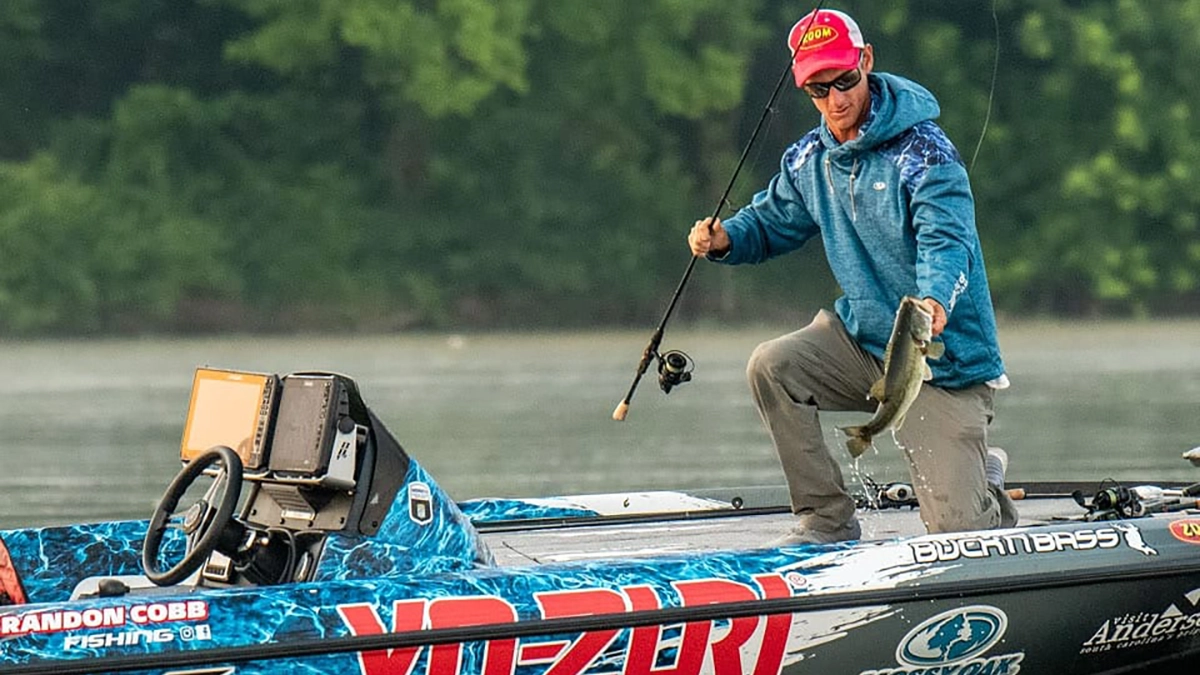
South Carolina/North Georgia: Brandon Cobb
What lure I’m throwing in January varies by lake. Half our lakes are muddy and half our lakes are clear. In the muddy lakes, I’m cranking a bunch of different small, shallow diving crankbaits in crawfish colors — like a shallower diving Wiggle Wart style. I prefer a relatively tight wobble, but round body, which is kind of the opposite of what most people do.
I’ve also been throwing a ChatterBait and a thumper spinnerbait, a big 3/4-ounce single Colorado-bladed spinnerbait in the muddy water. I keep the ChatterBait and spinnerbait on the deck for wood, and then I throw the crankbait on rock and points and pretty much everything else.
Some of the clear lakes I fish have spotted bass, some have largemouths. In either case, it’s definitely your typical jighead and minnow combo for me. I generally have a 1/8-, 1/4- and 3/8-ounce Greenfish Tackle Jighead rigged up with a Zoom Winged Fluke. I’ve been using Zoom’s new minnow bait, the Wing Fluke, both the 4-inch and 5-inch sizes — I’ve been throwing the bigger one a good bit. But if it’s spotted bass, I’m throwing the 4-inch more.
I try to catch them on the heavier heads if it’s a day where they’re just biting; because it’s easier, quicker, and you can get it to them faster. The 3/8-ounce size I pretty much use exclusively vertically. And then I vary between the 1/8 and 1/4 for throwing at fish. If they follow the 1/4 a long way, rather than just eat it, then that’s when I go to the light one. But it’s hard to hit them if they’re swimming fast on bait.


